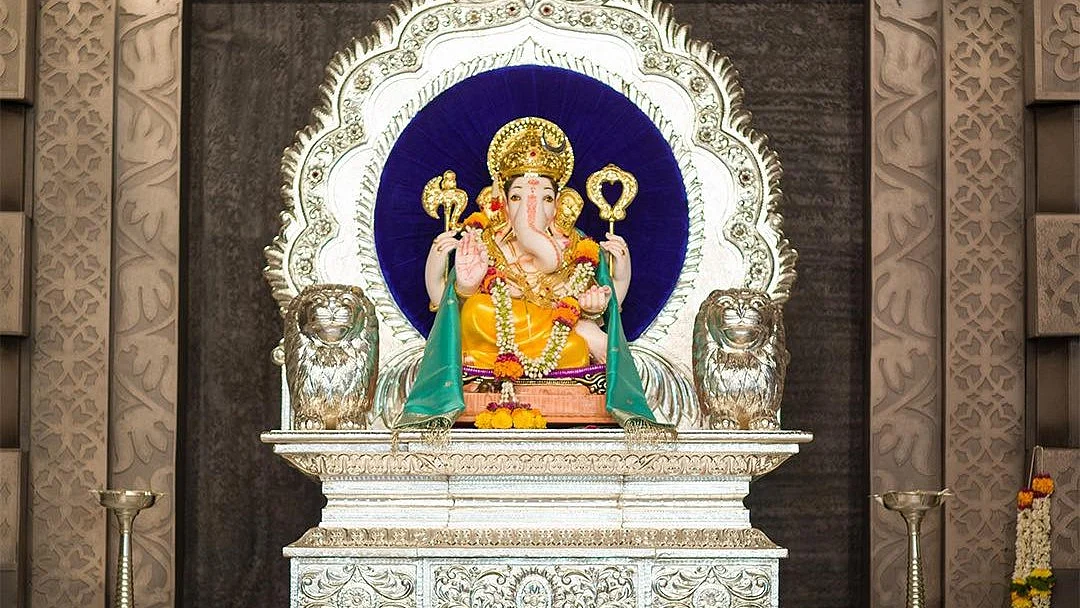Ganpatis Of Pune: Kasba Ganpati – History, Significance & Legacy
Kasba Ganpati holds the distinction of being the first honoured Ganpati, locally known as "Manacha Pahila Ganpati," among the five most revered Ganpatis in Pune

Ganpatis Of Pune: Kasba Ganpati – History, Significance & Legacy | Instagram/shrikasbaganpati
Kasba Ganpati holds the legacy of ushering in the use of religion and culture as a component for mass awakening and instilling in individuals the spirit to fight against oppression. The land of Kasba Ganpati is a witness to moments of Indian history, where the masses were channelised into unified action to achieve political and social objectives. For its historical and cultural significance, Kasba Ganpati is widely revered as a symbol of Pune City's rich history. It holds the distinction of being the first honoured Ganpati, locally known as "Manacha Pahila Ganpati," among the five most revered Ganpatis in Pune.
Idol was discovered near Vinayak Bhatt Thakkar’s residence
Bhushan Rupde, treasurer of Kasba Ganpati Trust, speaks fondly about the cultural and national history of the Ganpati. Rupde told The Free Press Journal, “The discovery of the swayambhu (natural idol) of Kasba Ganpati holds significant importance in the history of Chhatrapati Shivaji Maharaj’s Deccan campaign to reclaim the forts and land from Bijapur’s Adil Shah sultanate and Mughal empire.” Around the 1630s, when villagers started to leave for Pune from villages to escape the oppression of Adil Shah's rule, Mata Jijabai took Chhatrapati Shivaji Maharaj along with her to Lal Mahal, their residence in Pune, to look after their subjects. Mata Jijabai, being an ardent devotee of Ganpati, asked her loyalists to look for an idol of Ganpati in the nearby locality to seek his blessings to rebuild Pune. When a swayambhu (naturally formed) idol was discovered near Vinayak Bhatt Thakkar’s residence, Mata Jijabai, seeing it as an auspicious sign, commissioned the Kasba Ganpati temple, Rupde explained.
ALSO READ
Pune’s Gram Daivat
The temple, built in the traditional Puneri Wada style with stone and later adorned with intricate wooden elements by the Peshwas, became a spiritual cornerstone for the emerging Maratha Empire. Mata Jijabai consecrated the Ganesh idol at the hands of Chhatrapati Shivaji Maharaj, cementing Kasba Ganpati’s status as Pune’s "Gram Daivat." Rupde says a convention was developed afterwards that whenever Chhatrapati Shivaji Maharaj marched against the Mughals, he would first seek the blessings of Kasba Ganpati with his compatriots. It serves as a place from where Maratha aggression against the Deccan Sultanate and Mughal rule in Maharashtra commenced.
133rd year of Ganesh festival celebration at Kasba
Girish Kopalkar, a designer and craftsman entrusted with the responsibility to design the Kasba Ganpati mandal, highlighted its importance of during the national freedom struggle. Kopalkar told FPJ, “In 1893, Bal Gangadhar Tilak’s use of religious processions to further the struggle for the national movement started from Kasba Ganpati.” The political acumen of Tilak can be gauged from the fact that 108 Ganesh mandals were established within a year. The locals of Pune positively responded to Tilak’s call, and soon what was a private religious festival changed its status to Maharashtra’s most celebrated public festival. This year marks the 133rd year of Ganesh festival celebration at Kasba, the oldest public procession of the Ganesh festival, a tradition rooted in Pune’s cultural history, Kopalkar added.
Ballaleshwar Ganpati of Pali at Kasba this year
The Kasba Ganpati Mandal has used innovative ways to design the decoration of the Ganesh mandal with a new theme each year. Kopalkar’s association with Kasba Ganpati can be traced back 18 years to when he was a teenager who observed the Ganesh festival with devotion and reverence. He says that for the last two years, the overarching theme of Kasba Ganesh mandal has been to pay reverence to the Ashtavinayak, the eight most revered Ganpatis of Maharashtra. This year, the mandal has been decorated with reference to Ballaleshwar Ganpati of Pali, the third among the Ashtavinayak Ganpatis, while the last two years covered the first two Ashtavinayaks: Moreshwar of Moregaon and Siddhivinayak of Siddhitek, Kopalkar added.
ALSO READ
'My husband was almost dead...'
Devotees at Kasba Ganpati have their own unique sense of devotion and experience with the deity, which sometimes obscures reality and has a touch of mystique. Sakshi Jankar, 23, a devotee at Kasba Ganpati, told FPJ, “I have been visiting the temple since my childhood; whenever in doubt, I seek his blessings before commencing important work.” Another devotee, Supriya Shirke, 38, shared that Kasba Ganpati holds a special place in her heart since she came to Pune after her marriage. While recalling an incident when her husband met with a major accident in Kolhapur, Supriya said, “My husband was almost dead; he went into a coma, and doctors were unsure whether he would ever regain consciousness. However, my daily prayers at Kasba Ganpati were answered, and he returned from the coma and is currently out of danger and doing well."
Bhushan Rupde says the Kasba Ganpati Mandal Trust has always prioritised historical cultural tradition and simplicity over fancy decorations and electronic music. The 10-day festival will be celebrated with bhajans, honouring three artists from Maharashtra (an annual tradition), and an essay contest for children. As Pune gears up for the Ganesh festival, the organisers of Kasba Ganpati Mandal Trust are ensuring everything is in place to avoid any inconvenience to devotees.
RECENT STORIES
-
-
-
-
-